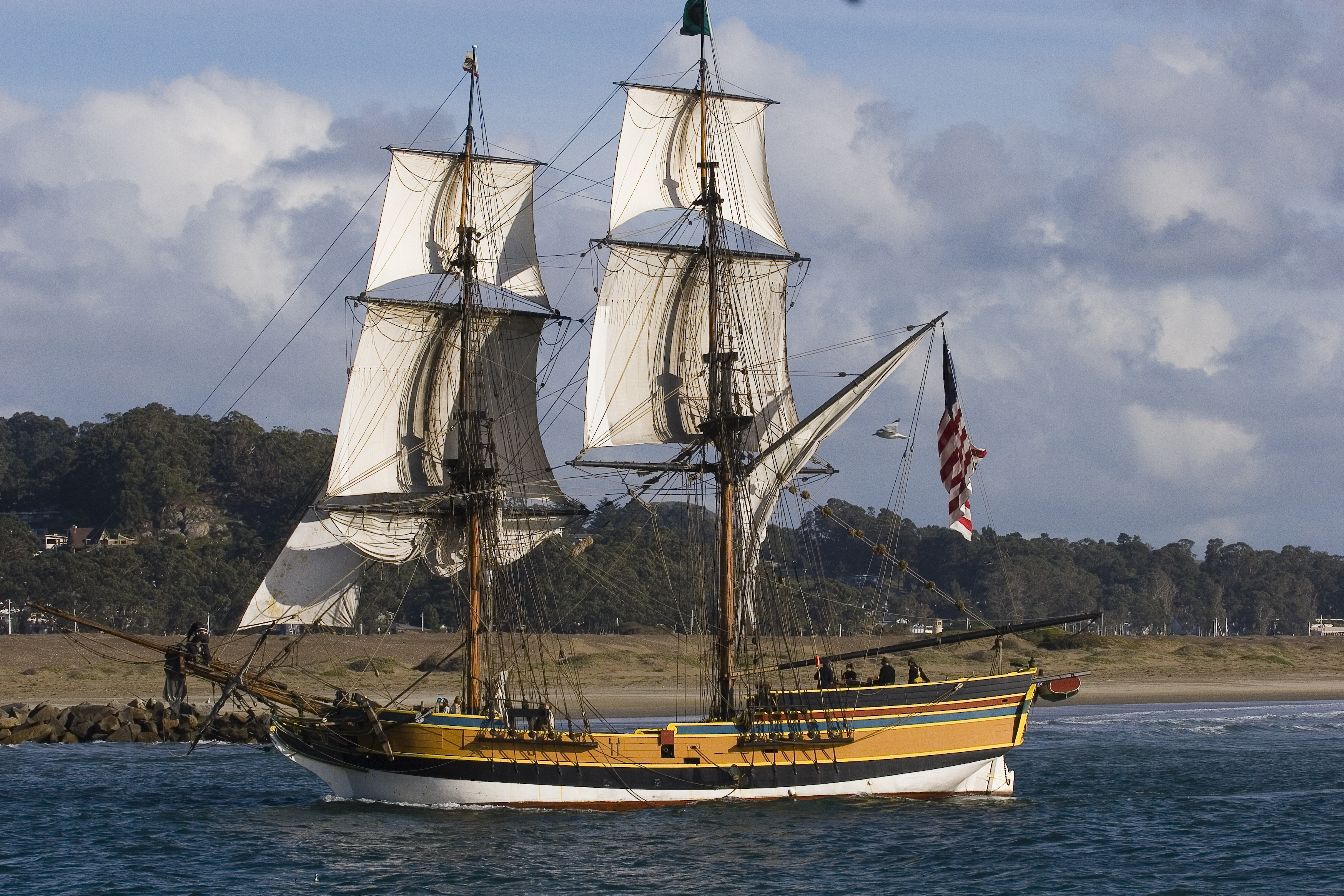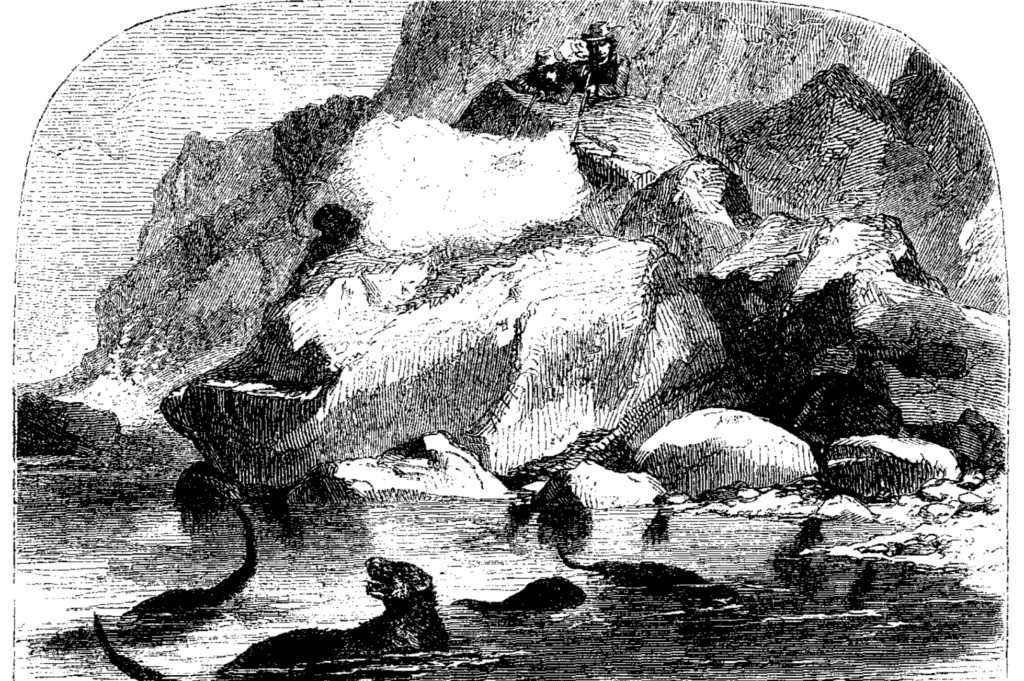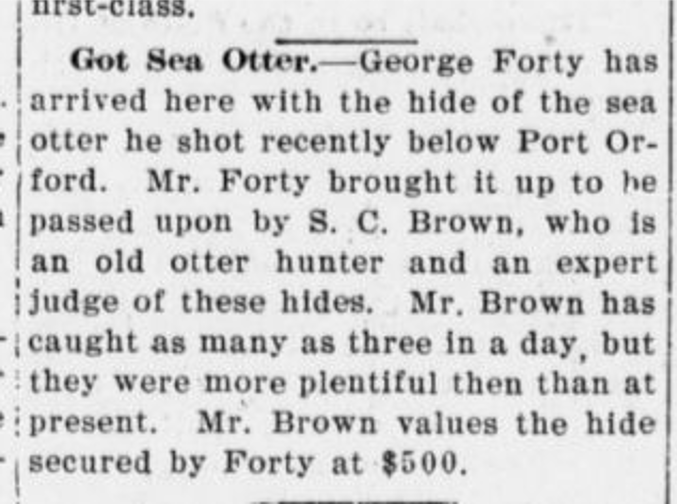Destruction: The Maritime Fur Trade
Oregon’s sea otters disappeared in flash of destruction, as one small part of an ocean-spanning fur boom driven by demand for their lush pelts. The commercial trade began in the 1700s and by the late 19th century effectively wiped out sea otters across much of the Pacific Rim, including Oregon.
From local hunting to global industry
Beginning in the mid-1700’s, sea otters were aggressively hunted throughout their range for their rich fur pelts in the maritime fur trade era. Russian hunters started in the Aleutian Islands in Alaska (often using forced labor of Aleutian Islanders) and ultimately reached as far south as northern California. Subsequently, the British led the rush to trade with Northwest Coast Native Americans for the luxuriant pelts. In a last wave, Americans dominated the trade from the 1790’s onward until it petered out due to over-hunting in the mid to late 19th century.

Reports of fur traders show they traded with the Native peoples for sea otter pelts near the mouth of the Columbia River and at Port Orford, and likely other locations as well. However, Oregon may have been somewhat protected from the international trade by having few harbors big enough for the large European ships.
By 1810, sea otters were increasingly scarce on the Northwest coast, probably including Oregon populations, though the evidence is sparse. A Harper’s Magazine article in October, 1856 reported sea otter hunting near the mouth of Coos Bay.


Long after the maritime fur trade ended, settlers on the Oregon coast still hunted the local sea otters from small boats or from shore, though the populations had declined drastically. They were eliminated entirely from Oregon in the early 1900’s.
Today, modern place names such as Otter Rock, near Newport, and Otter Point, near Gold Beach, remind us of their former presence.

Learn about Captain Eayrs sea otter smuggling antics on the Pacific Coast.
Learn about sea otters and Oregon’s coastal tribes
Learn about the brief effort to restore sea otters to Oregon in the 1970s.

